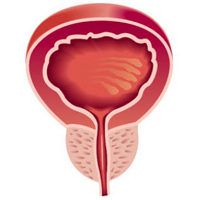Diagnostic efficacy and safety of transperineal prostate targeted and systematic biopsy: The preliminary experience of first 100 cases
Background: Post-biopsy urosepsis is a major concern for patient morbidity and cost. Trasperineal biopsy is reported to have less complications and higher detection rate of clinically significant prostate cancer (csPCa).
Objectives: To determine the diagnostic efficacy and safety of transperineal prostate biopsy in patients with elevated prostatic specific antigen (PSA).
Material and methods: A prospective study included men with elevated PSA > 3 ng/ml and previous negative biopsy from January 2018 to April 2019. All patients had multiparametric magnetic resonance imaging (mpMRI) and suspicious lesions reported as Prostate Imaging Reporting and Data System (PIRADS) score version 2. Average twelve systematic and two targeted cores were biopsied under general anaesthesia. Patients received single dose of antibiotic prebiopsy.
Results: 100 Consecutive patients having median age 64.0 years and median PSA of 6.1ng/ml were included for mpMRI-US fusion transperineal biopsies. Cancer detection rate was 45% (targeted 38% and systematic 22%) and csPCa were detected in 75.55% (targeted 86.84% and systematic 59.09%). MRI-US fusion targeted biopsies detected 63.88% csPCa in PIRADS 5, 33.33% in PIRADS 4 and 5.88% in PIRADS 3 lesions. PSA > 10 (p = 0.012), PSA density > 0.15 (p = 0.0002), and PIRADS 5 (0.0001) were significantly associated with PCa. Factors like Age (0.0001), initial PSA (0.022) and PSA density (0.006) were significant on univariate analysis while age (0.0001) was significant on multivariate analysis. There was no case of urinary tract infection.
Conclusions: Transperineal prostate biopsy is safe and effective in diagnosing csPCa. There is no risk of sepsis and major complications.
How to Cite
PAGEPress has chosen to apply the Creative Commons Attribution NonCommercial 4.0 International License (CC BY-NC 4.0) to all manuscripts to be published.

 https://doi.org/10.4081/aiua.2021.2.127
https://doi.org/10.4081/aiua.2021.2.127




